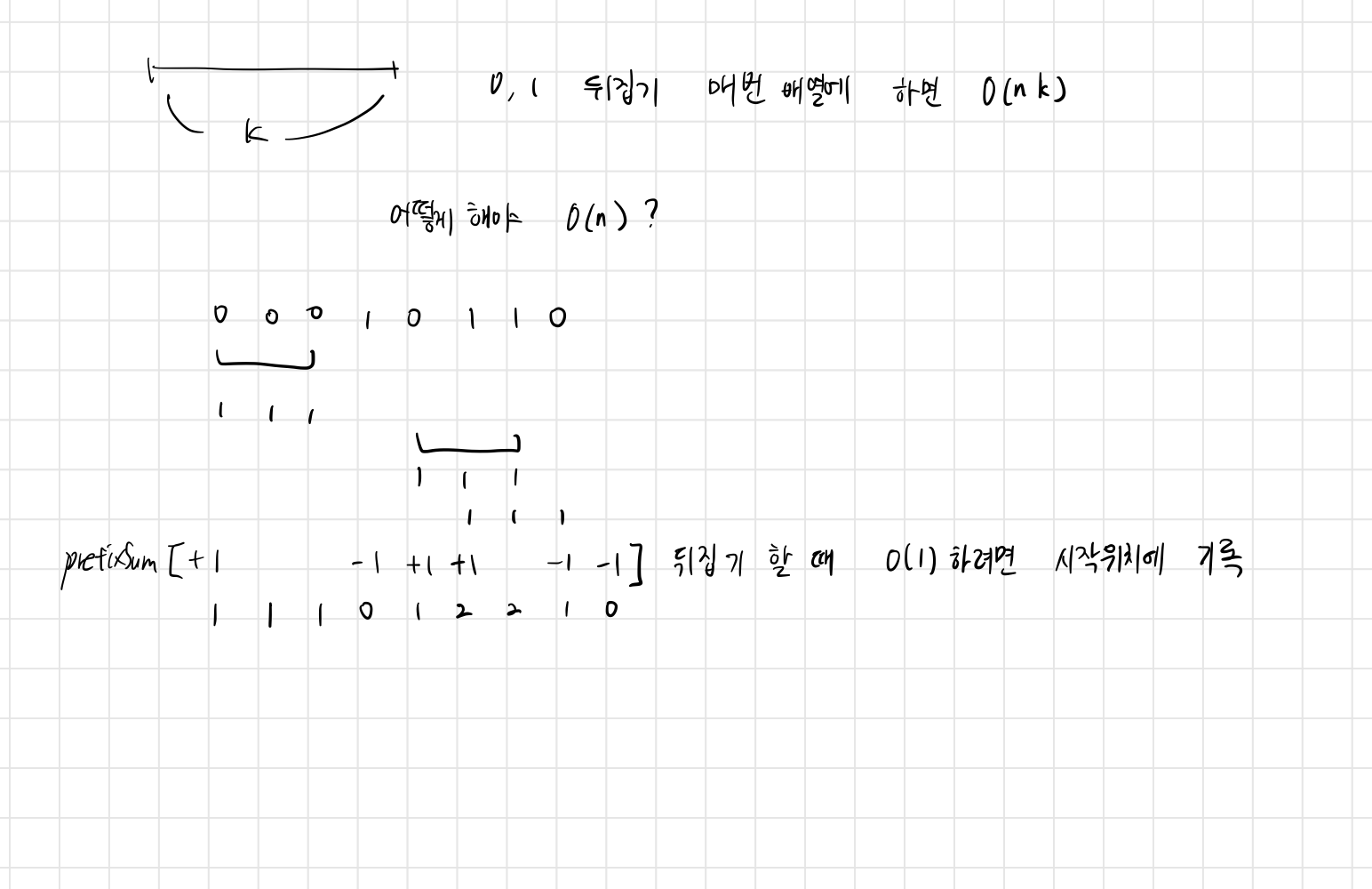LeetCode_1037_Minimum Number of K Consecutive Bit Flips (Java)
LeetCode_1037_Minimum Number of K Consecutive Bit Flips (Java)
1037. Minimum Number of K Consecutive Bit Flips
Hard
You are given a binary array nums and an integer k.
A k-bit flip is choosing a subarray of length k from nums and simultaneously changing every 0 in the subarray to 1, and every 1 in the subarray to 0.
Return the minimum number of k-bit flips required so that there is no 0 in the array. If it is not possible, return -1.
A subarray is a contiguous part of an array.
Example 1:
Input: nums = [0,1,0], k = 1 Output: 2 Explanation: Flip nums[0], then flip nums[2].
Example 2:
Input: nums = [1,1,0], k = 2 Output: -1 Explanation: No matter how we flip subarrays of size 2, we cannot make the array become [1,1,1].
Example 3:
Input: nums = [0,0,0,1,0,1,1,0], k = 3 Output: 3 Explanation: Flip nums[0],nums[1],nums[2]: nums becomes [1,1,1,1,0,1,1,0] Flip nums[4],nums[5],nums[6]: nums becomes [1,1,1,1,1,0,0,0] Flip nums[5],nums[6],nums[7]: nums becomes [1,1,1,1,1,1,1,1]
Constraints:
1 <= nums.length <= 1051 <= k <= nums.length
문제 풀이
코드
1
2
3
4
5
6
7
8
9
10
11
12
13
14
15
16
17
18
19
20
21
22
23
24
25
26
27
28
29
class Solution {
public int minKBitFlips(int[] nums, int k) {
int left = 0;
int[] prefixSum = new int[nums.length + 1];
int cnt = 0;
int currSum = 0; // 이전 뒤집기 기억해서 지금칸에 몇번 뒤집을지 0~k번 중 반영해야함
for (int i = 0; i < nums.length; i++) {
currSum += prefixSum[i];
int currState = (nums[i] + currSum) % 2;
if (currState != 1) {
if (i > nums.length - k) {
return -1;
}
cnt++;
prefixSum[i]++;
prefixSum[i + k]--;
currSum++;
}
}
return cnt;
}
}
This post is licensed under
CC BY 4.0
by the author.


